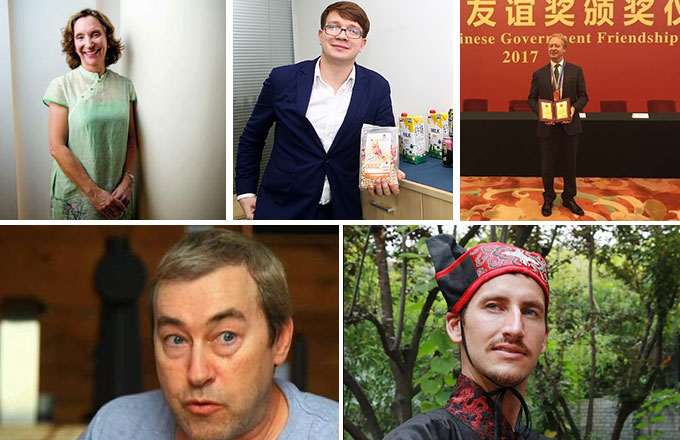For perspective, artists show a third way
Exhibition brings China to viewers through metal, wood, water, fire and earth
A new wave of Chinese art that focuses on constructive communication with the West is fast emerging in China, and visitors to Saatchi Gallery in London were able to get a taste of it through an exhibition between Nov 6 and 8.
"In the past, in Westerners' eyes Chinese art lacked diversity," says Shen Qibin, one of the three artists whose works were displayed.
"On the one hand, you have artists who emphasize their Chinese qualities and on the other, you have artists who criticize the West. Now we are proposing a third option.
"What we focus on is the roots of Chinese culture, presented in a subtle and artistic way, to reflect the reality of contemporary Chinese life and thinking. I think in the future Chinese artists will move away from focusing on obvious Chinese symbols to develop more individuality and character."
Shen, born in Jiangsu province in 1966, is a well-known artist in China and has curated more than 100 exhibitions. He brought to the Saatchi Gallery a collection of images known as The Post-Garden that give viewers a glimpse into Chinese culture and the Chinese way of living.
The Post-Garden collection, curated by the British academic consultant David Elliott, creates a narrative of metal, wood, water, fire and earth, which in Chinese culture are regarded as the five elements that make up everything on earth.
The element of fire is presented through a collection of large paintings dominated by red, black and white, each depicting some aspects of a garden.
Shen says: "The concept of the garden occupies a central spiritual space in the Chinese culture, but as China urbanizes much of this garden is actually being lost, so I wanted to create the garden that exists in people's hearts, and make it unique through my use of material and artistic methods."
The black paint in the paintings includes ashes Shen created by collecting leaves in his own garden and burning them. The black ash is then evenly spread onto the black paint to form a smooth layer, so the painting is harmonized with the reality of his garden, Shen says, the red paint symbolizing fire.
In the metal element section, Shen has hung large pieces of wood on the wall, and each has a line from Shakespeare engraved onto it.
Shen has used large nails to fix a metal shape on top of the wood, the shapes being figures such as a mountain, flower, people, rocks and birds, which are taken from a Chinese publication.
Figures from the manual overlap the Shakespeare words but without preventing readers from being able to easily read them.
"The Shakespeare lines are familiar to the Western audience, and the Manual of the Mustard Seed Garden images are familiar to the Chinese audience," Shen says.
"But when these two elements are being incoherently placed beside each other and are forced to overlap, there is the feeling that a third language is being created, and suddenly Western and Chinese cultures are in communication."
Shen says it is this type of communication that allows the West and China to see each other in a clearer light, and in a way that allows dialogue while recognizing each other's uniqueness and differences.
The idea of cultural differences and identity is also explored in the work of Jin Feng's collection The Door, which takes inspiration from an episode in China in the 18th century.
In 1793, King George III sent Lord Macartney and a huge mission to China to congratulate Emperor Qianlong on his birthday. William Alexander, Macartney's accompanying artist, painted water color paintings along the way to reflect China's politics, economics and local customs and practices.
Jin has chosen some of these paintings from Alexander and painted them on large wooden doors, and placed the doors in a large room leaving some open and others closed, to explore the idea of China's opening up to the outside world.
The doors presented are from historic buildings in China.
"It gives the viewer a view as if they are walking through history and exploring China at the time compared with now," Jin says.
"The set-up of the installation facilitates the viewer's thinking about the outside world's perception of China and how these perceptions are being constructed."


















